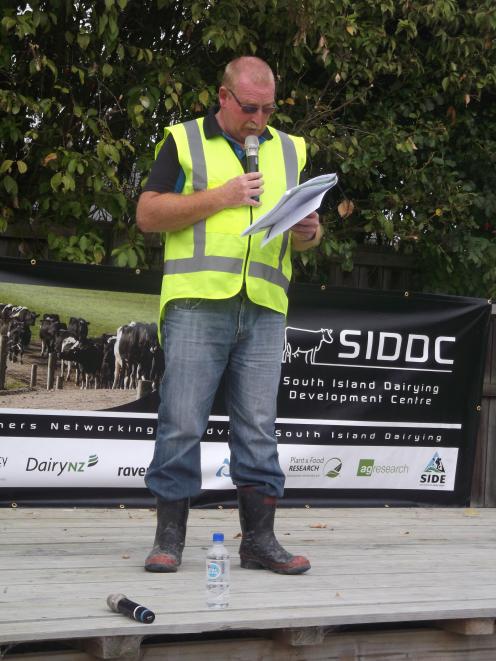Price volatility means farmers should remain cautious, despite the improved milk price.

Farmers were reminded of the milk-price volatility at the Lincoln University Dairy Farm's summer focus day last Thursday.
South Island Dairying Development Centre (SIDDC) executive director Ron Pellow reminded farmers of last season, when Fonterra's initial forecast was more than $5 per kilogram of milk solids before it fell below $4/kgMS.
This season, Fonterra's initial forecast was $4.25/kgMS but it now appeared to have stabilised at $6/kgMS.
''With the cashflow we will now have left over, we will be able to do the things we want to do on the farm. But we will continue being very cautious to make sure we can be sustainable whatever the outcome.''
Mr Pellow said the farm had budgeted on farm working expenses of $3.79/kgMS, assuming a production of 285,000kgMS, putting the farm in a strong position now that the forecast milk price had risen.
Farm manager Peter Hancox said milk production was 2% behind budget.
''We started the season off pretty well with the mild winter, but in November and December we were about 3%-4% behind.
''With the wetter weather we weren't able to manage the pasture by mowing in front of the cows like we normally do, which affected the pasture quality.''
Production to the end of January was 188,000kgMS from 544 cows, compared with 190,000kgMS last season with 548.
Mr Hancox said less silage had been fed out than budgeted, no Gibberellic acid had been used and just one paddock had been regrassed instead of two, resulting in some cost savings.
''We have managed to operate the farm under budget so far this season, but some of the $88,372 savings in the budget will be spent later in the season, including the cost of fodder beet instead of silage, some repairs and maintenance on the tracks and pivot ruts.''
Overall, Mr Hancox said he was happy with how the season was progressing, but he did have concerns with disappointing six-week in-calf results, especially among the heifers (which had a 9% empty rate), and some cases of the infectious bovine rhinotracheitis virus.
Mr Pellow said the farm's management was also focused on reducing its environmental footprint as it looked ahead to 2022, when the Selwyn-Waihora Zone sub-regional plan requirements for farms leaching more than 15kg of nitrogen per hectare took effect.
''We are forecasting to be within 25% of our nitrogen baseline, but we're not quite where we need to be in 2022 - but we're getting there.
''I'm sure there's more efficiency gains to be had and we will keep looking for those.''
-By David Hill
